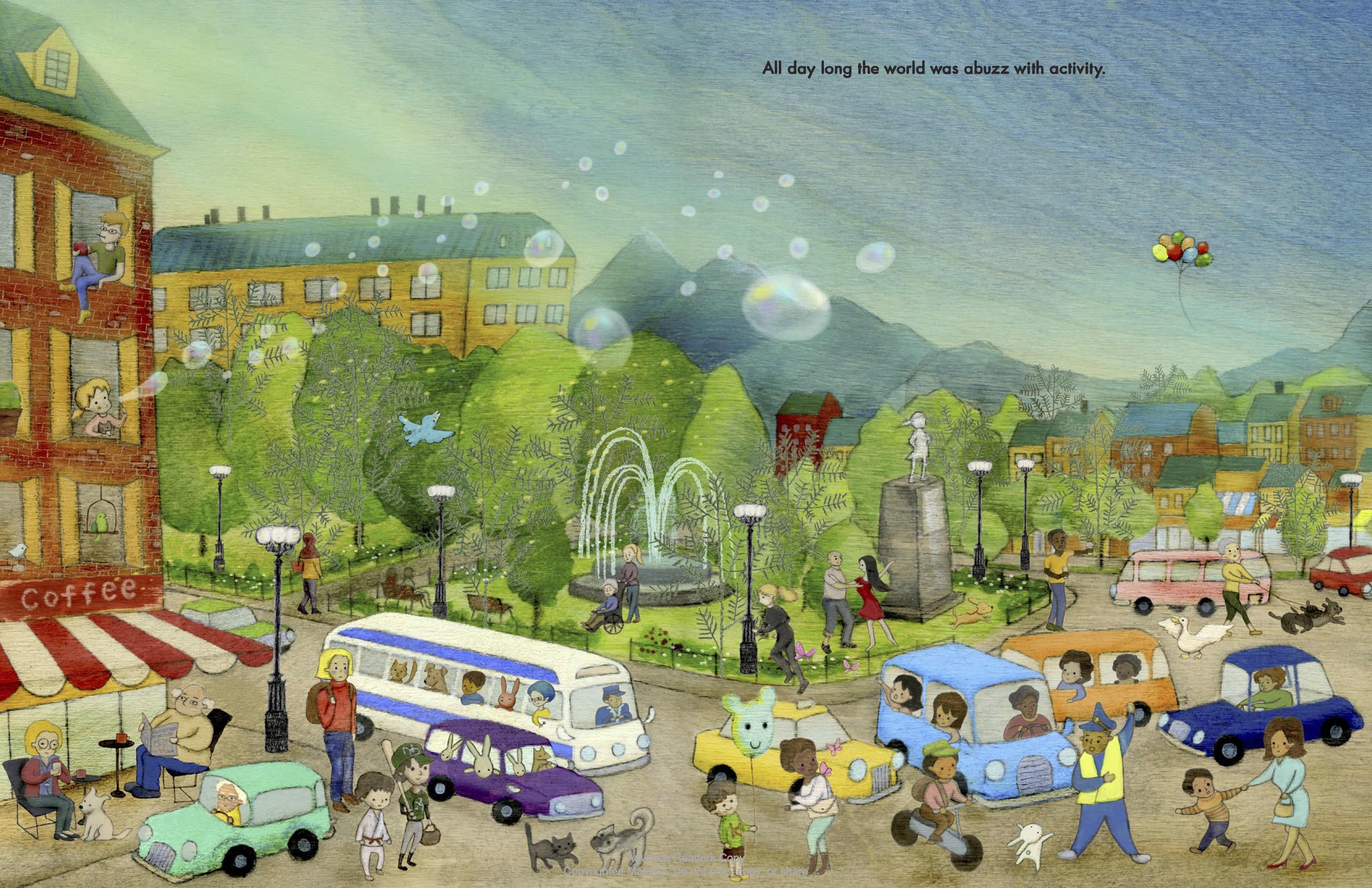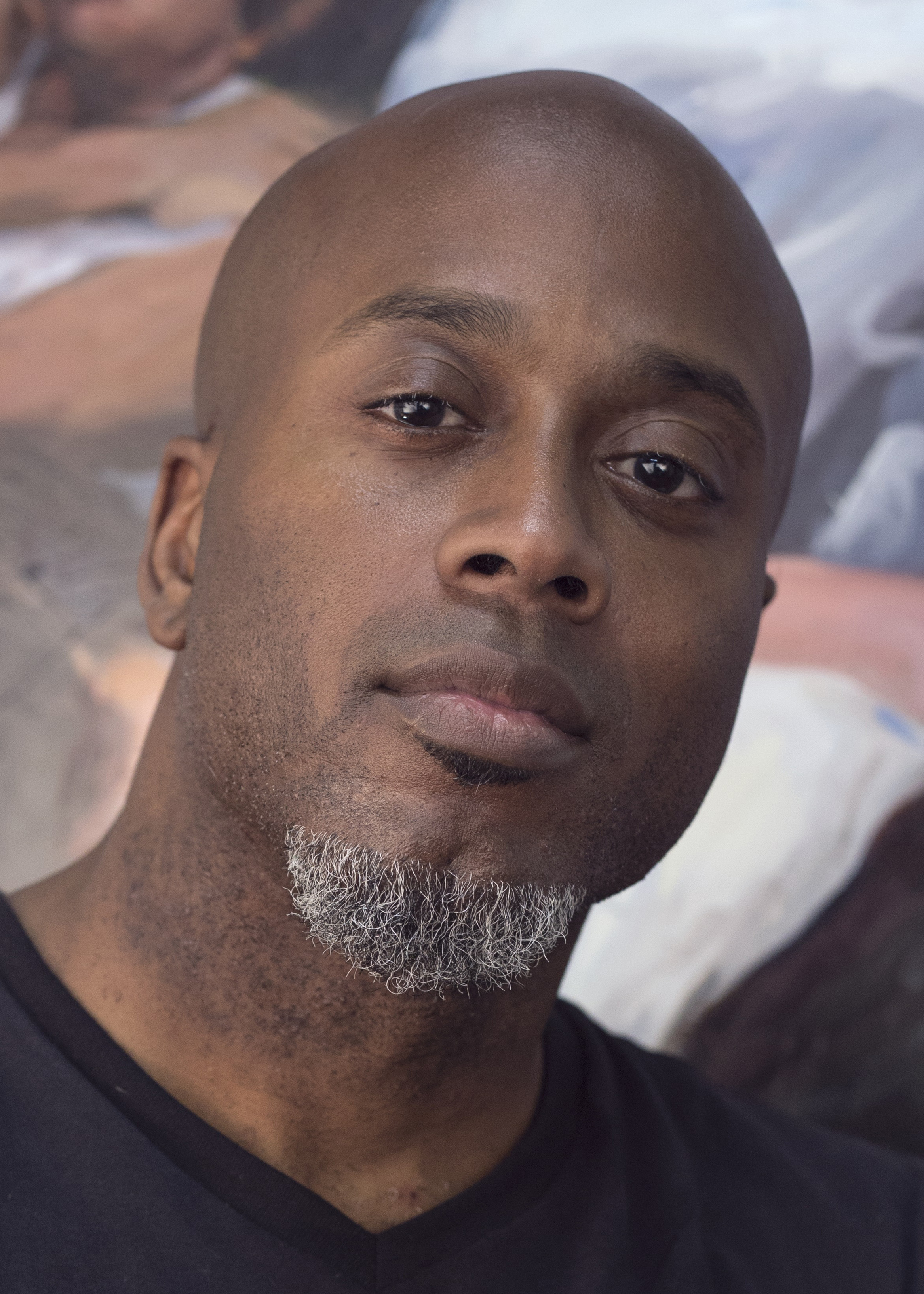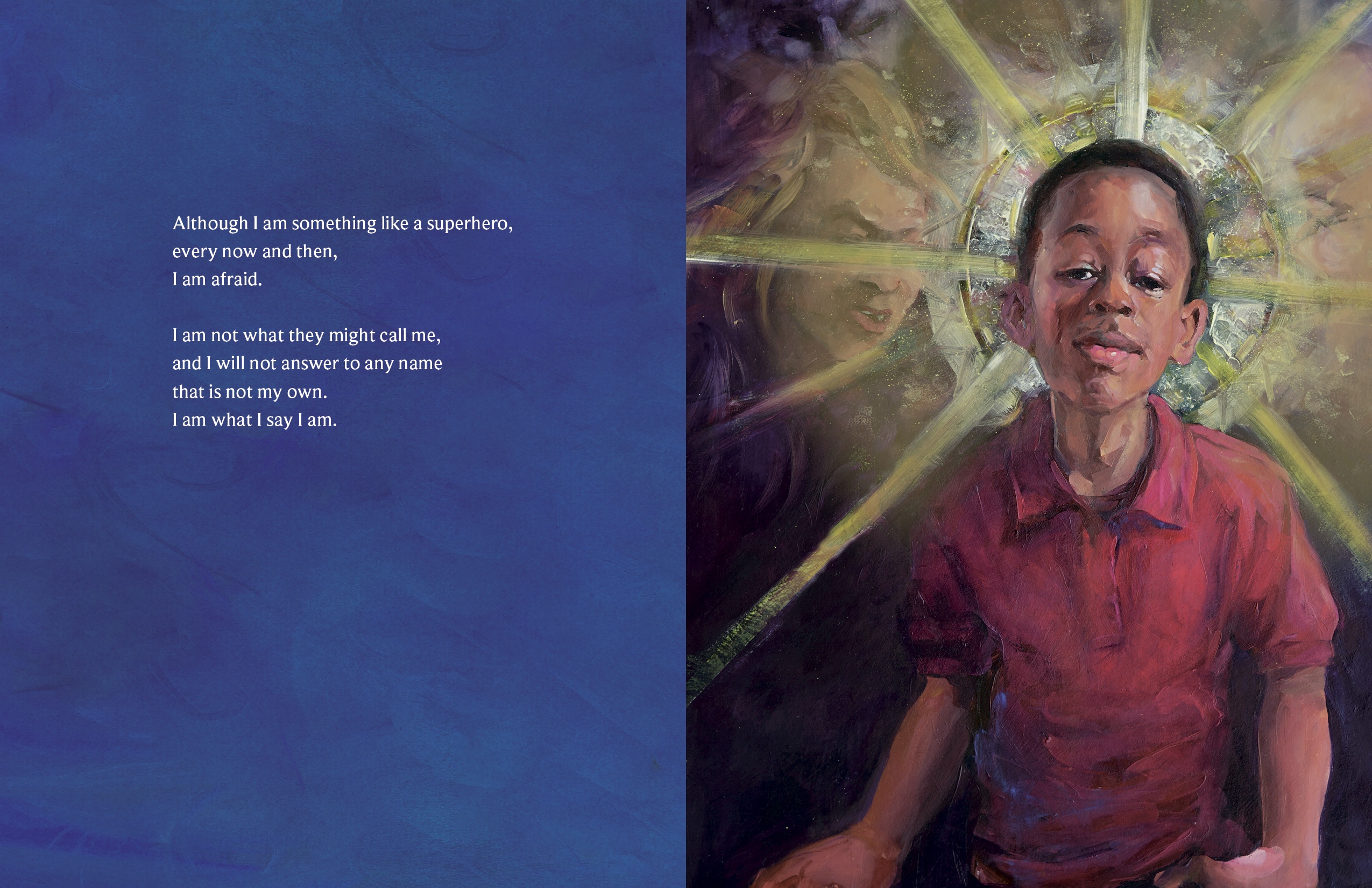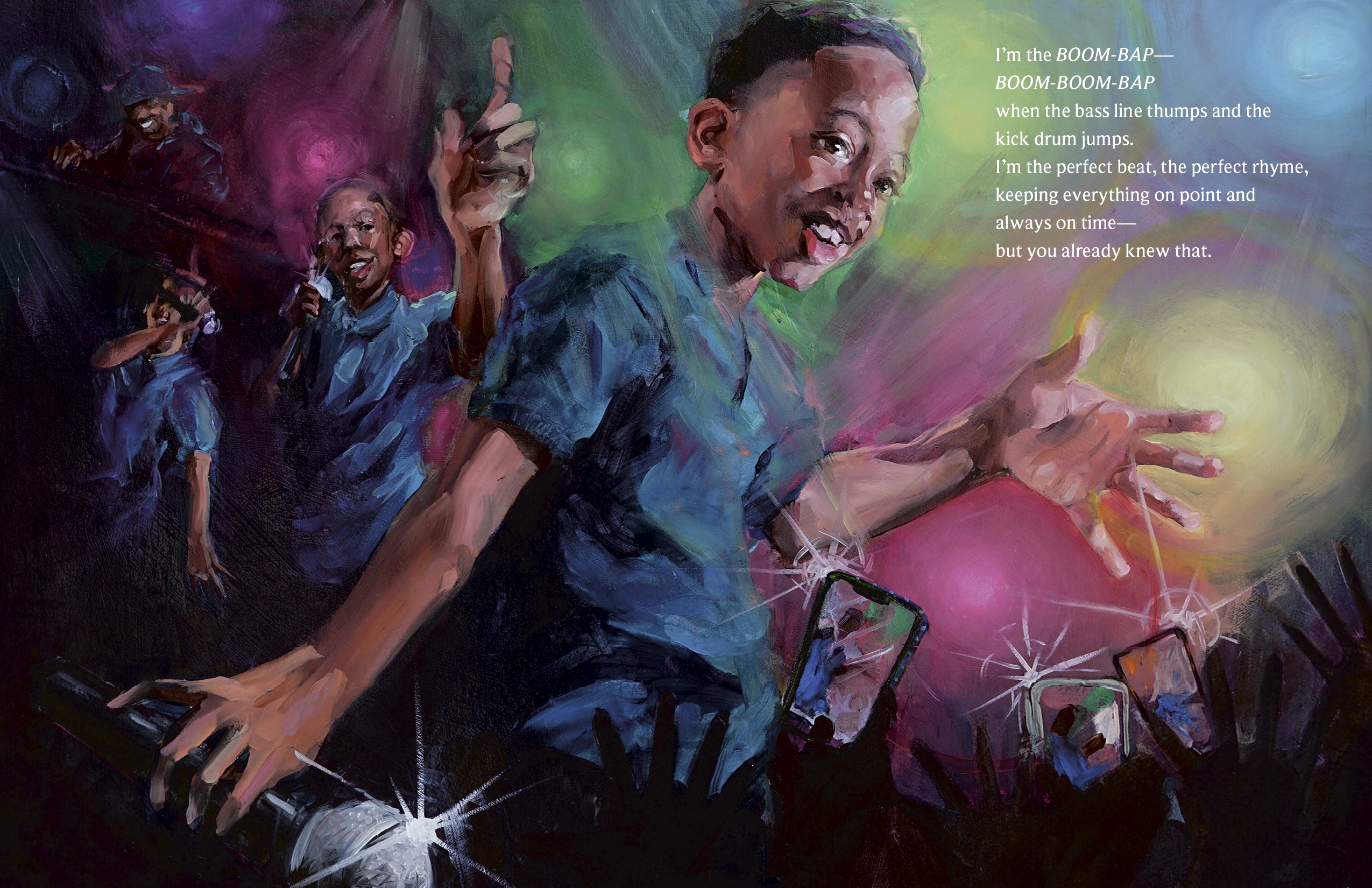 BookPage Icebreaker is a publisher-sponsored interview.
BookPage Icebreaker is a publisher-sponsored interview.
In her new picture book, Fancy Party Gowns, award-winning journalist Deborah Blumenthal shares with young readers the little-known story of African-American fashion designer Ann Cole Lowe. Driven by an unyielding passion for her work, Lowe designed one-of-a-kind gowns for society women from the 1920s through the ’60s, including the dress for Jacqueline Bouvier’s wedding to future president John F. Kennedy in 1953. Nothing could stop Lowe—not prejudice, not segregation at design school, not even a water leak that destroyed all the dresses for Jackie’s wedding party.
Cat: I have to say, I just dived into information about this woman after reading this book. And that’s the goal of picture book biographies, I think—so, congratulations. Ann really was incredible.
Deborah: Yeah, I know. It’s just this story that hasn’t been told, so I was riveted when I heard about her.
When did you first learn about her?
I guess it was about two and a half years ago. It was interesting because it came through Facebook. A woman who I’m friends with on Facebook put up a post about Ann. My friend is very interested in women’s history and active in politics, and she often posts about different people who never got their due in terms of recognition. She had a post about Ann and about the fact that she designed Jackie Kennedy’s wedding gown. Immediately I was interested! And then I realized that no one had heard of this woman. I thought, oh, my history/background was rusty. You know, I spoke to a bunch of people I knew—history buffs, one woman who’s a feminist historian—and no one knew her name. Of course I really became intrigued then, and I started looking into her story. I was really captured, and that led to the book.
I was reading an interview with her from a 1966 issue of Ebony magazine, later in her life, and she really is as indomitable as your book portrays her. She only had one eye from glaucoma, and she’s cracking jokes about her second husband leaving her because she sketched dresses too much, and making plans for 15 new gowns, sort of brushing past the fact that she has no money to do so. She really was unstoppable, wasn’t she?
Right. I think like many artists, she just loved the work. She didn’t seem all that concerned about financing. That wasn’t her strong suit, but she just loved designing and loved making beautiful gowns. And she loved designing for society women, those were the women she wanted to design for. I think that’s what kept her going in the face of a lot of adversity that she had to deal with. I found it a truly inspiring story to write.
We could spend a lot of time talking about her hats, let alone her achievements.
Right!
“It gave her great joy to work with fabric and design and look at flowers and recreate them in fabric. I think she just blocked out a lot, and that saved her.”
The whole story’s made all the more remarkable by the fact that she was born and raised in the Jim Crow South. She came from a mother and a grandmother who were seamstresses in Alabama, and so she had a strong background, but she also had this drive that was all own. How do you think the era shaped her determination?
The impression I got was that she was able to block out what she wanted to block out. She was one of the people who was fortunate enough to, at an early age, find out what she loved to do. Most of us don’t have that, our passion, that early in life. She had this focus, this laser focus on what she loved to do. It gave her great joy to work with fabric and design and look at flowers and recreate them in fabric. I think she just blocked out a lot, and that saved her. Just doing work she loved, and it kept her going.
One of the most memorable moments in the book is when Ann is studying in a segregated design school in a classroom, all alone. And you write, quite simply, “And life wasn’t fair.” And then you echo that same line later when you’re talking about when she didn’t receive credit for Jackie’s dress. It felt like you were channeling Ann at that moment. It’s such a pragmatic response to something that is so unfair, you should righteously angry about it. The reader gets righteously angry. But she’s just unflappable.
She didn’t let the anger paralyze her. Because it can! I had one line in the book—“Ann thought about what she could do, not what she couldn’t change.”
It becomes a type of refrain.
Yeah, it’s like a survival instinct. You do what you love and you forge ahead. That’s the most inspiring part of the story, I think, and that’s what the takeaway is for readers: to find your passion and run with it when you do.
It’s such an incredible lesson, this power of small changes to influence the world. Do you sew?
No! No is the immediate answer. Have I sewn in the past? I took sewing in school. I was terrible at it. But you know what I do remember is, when I was sewing, you block out everything else. It really is a great escape from things. You’re so fixated on the fabric and stitching and working that it really is a great way to block out things. Was I good at it? No! But I didn’t really continue with it, so maybe I would’ve been!
Do you have a favorite gown of Ann’s?
I love the one she did for Olivia de Havilland with the roses. I love that. There is a show right now—I haven’t seen it, it just opened—at FIT, of some of her gowns.
Yeah, I was going to ask about that. I felt the show ties into one of the most striking quotes from Ann in the book, which is that she didn’t want to get rich or famous from design, she wanted “To prove that a Negro can become a major dress designer.” I was reading about this show at FIT, and the curators acknowledge that there’s a problem with using race as a lens to view art or craft. There’s a pigeonholing problem of grouping together artists just because of the color of their skin, but Ann really wanted that distinction.
At the time, it was very important. There weren’t a lot of people doing what she was doing, and she wanted to break through that. Obviously she did! Her work was clearly recognized for the quality, but she didn’t get the public recognition. She had clients and her work was in demand, but no, they didn’t recognize her publicly, which is the sad part.
I’d love to know what you think she might’ve meant by that, because she did become a major dress designer. Do you think she was happy with being known throughout the social elite that she was the one to go to, or do you think she did want that public acknowledgement? Not necessarily fame, but to be publicly named as the designer.
Well, I think both. Clearly, she was happy that she had all these clients, but I think she did want the recognition. And I think she hoped that, after she did Jackie’s wedding gown, she would get recognition, and I think it was a big disappointment to her that she didn’t. She was always hoping for that. It came in dribs and drabs a little later on in her life, but that was her greatest achievement, doing that gown, and clearly, everyone should’ve mentioned who designed it! There was only one mention in the Washington Post! I mean, how sad is that? Nine Hyde in the Washington Post said that “the dress was designed by a Negro, Ann Lowe.” They had to qualify it. It’s heartbreaking.
Is it still the most photographed wedding gown in American history?
I think it is.
Am I correct in saying that she didn’t just change the fashion industry for black designers, she kind of changed the whole dressmaking tradition? She was part of this transition from countless unnamed black dressmakers to the modern conception of the American designer.
I think she really was one of the first great couture designers. Well, I’d have to qualify that: I don’t know that she was one of the first in terms of couture designers. She was certainly one of the first in terms of black couture designers. In the business of designing one-of-a-kind gowns, she was up there with the best of them.
You’ve written in a number of genres, and I’m sure you gain inspiration from true stories and fiction alike. But as far as writing nonfiction, do you get more out of the research or the writing?
For me, nonfiction is the stepping stone for how I conceptualize [the story]. It gives me a lot of material to draw from, but I don’t think of this as a biography per se. It’s biographical, but I’d like to go one step further and digest all this information and spin a book out of it. I don’t think of it as a definitive work about Ann Cole Lowe, but I tried to draw enough information to take it to the next step, if that makes sense.
Well, sure. This is a person’s life. She lived through the Great Depression. Was there anything you had to leave out that you were especially sad to not see in the book?
No, I didn’t really leave out anything. Clearly there was a lot of suffering on her part, financially, and some very tough times. I’m sorry she wasn’t around to interview. It would’ve added a huge dimension to the book. . . . For me the most dramatic part of the story, actually, was her designing the gowns [for Jackie’s wedding party] and then having them destroyed by the [water] leak.
That was unbelievable.
Yeah! And then delivering them to Hammersmith Farm and being told to use a back door! I can barely tell that without tearing up. To me, that was the most dramatic moment, maybe in her life. So astonishing, so disturbing.
If you had had the opportunity to interview her, is there anything you wish you could ask?
The one thing I would’ve done, probably, is sat there and studied her, how she looked. She was obviously a great icon of style. There are very few pictures of her, but there’s one picture of her, which I’m sure you’ve seen, in the black hat and leaning to the side—
So much attitude!
Yes, and you just know that some women, they have it. They just know. I can probably count the number of women I’ve seen in my life, walking down the street, and you feel like saying, “Could you just stand still for a minute so I can analyze what you’ve done, how you look that good? Because I could never do that.” So I think I’d want to do first, a half-an-hour thing, “Why’d you decide on that hat? Why that hem length on that dress, because it’s so right?” I would’ve loved to have lunch with her and talk to her about clothes and her feelings about clothes and putting together a wardrobe. And then I probably would’ve said, “What do you think of my outfit?” [laughs]
Did you know the illustrator, Laura Freeman, beforehand?
No, I didn’t know Laura. I always say, when you write a picture book and then your editor hands it to an illustrator, it’s like giving up your child. And when you get it back a year or two later, you have no idea what it’s going to look like. I had no clue how the book would evolve, and I was just thrilled when I saw the art. She did such a good job. It’s filled with emotion.
The whole thing looks like textiles and fabric swatches.
She really got what I was trying to do, and I think she just did a super job.
Maybe the most prominent moment of fantasy is in the endpapers, where Ann’s designs are modeled by illustrated women of different skin colors. Ann is a self-described snob—she wanted to design for the top social tier, which at the time had to have been mostly white women, if not all. Do you think Ann ever had the opportunity to design for women who weren’t part of this white social elite class?
That’s a good question. I think primarily those were the women. I’ve certainly never seen any pictures of women of color wearing her gowns.
Which is why I so appreciated those endpapers, for this moment of playing dress-up with history, putting all these women in her beautiful gowns.
Absolutely.






















 Barnes: The major difference was, when I wrote Crown, I didn’t even have a book deal, let alone an illustrator for the project. We went through at least three or four illustrators, who all turned it down. Gordon was meant to bring this story to life. There are no accidents in the universe. Our chemistry was still the same. We both agree on the message, the target audience and how much these affirming illustrations and words mean to Black and Brown boys.
Barnes: The major difference was, when I wrote Crown, I didn’t even have a book deal, let alone an illustrator for the project. We went through at least three or four illustrators, who all turned it down. Gordon was meant to bring this story to life. There are no accidents in the universe. Our chemistry was still the same. We both agree on the message, the target audience and how much these affirming illustrations and words mean to Black and Brown boys. James: After Crown, people were waiting to see what we’d do together next. How would it stack up? I was excited about the challenge to meet or even exceed those expectations. We still have the same personalities. We both want everything we create, together and separately, to be our best work. We want to leave a positive mark on our world.
James: After Crown, people were waiting to see what we’d do together next. How would it stack up? I was excited about the challenge to meet or even exceed those expectations. We still have the same personalities. We both want everything we create, together and separately, to be our best work. We want to leave a positive mark on our world.














